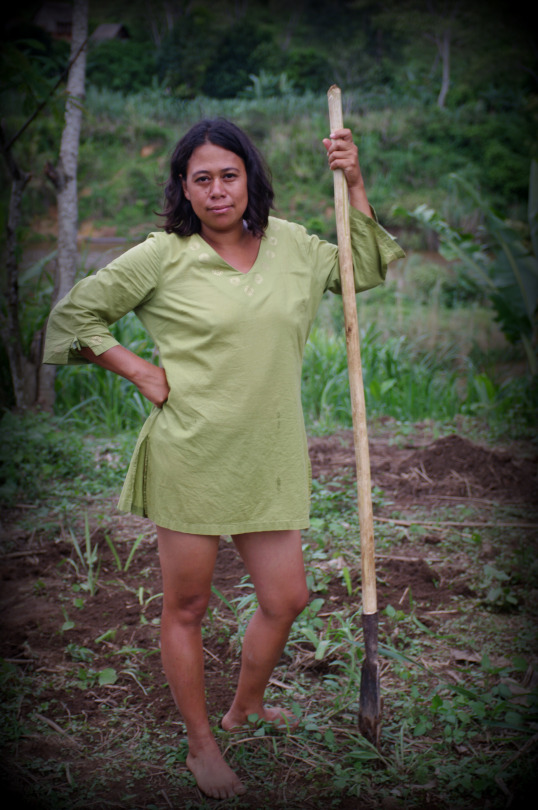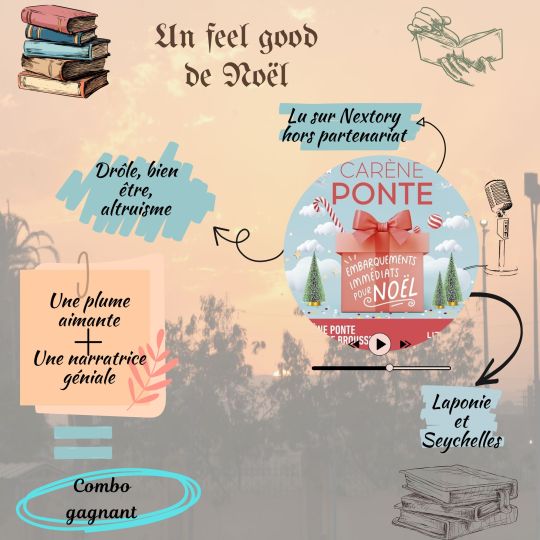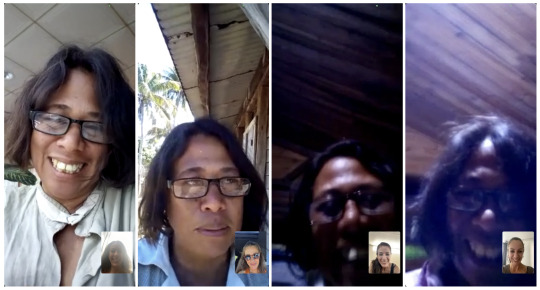#brousse
Explore tagged Tumblr posts
Text
11 novembre 2024
La messa anche nella brousse di Jangany 1/2
Brevissimo video inviato da padre Elysé, confratello di padre Tonino e padre Fahamaro di Jangany, incaricato di incontrare la gente della savana e celebrare la messa ogni domenica.
Qui siamo nella brousse di Ambararata a circa 1,5 ore di macchina da Jangany.
0 notes
Text
Annick : productrice d'huiles essentielles à Manaraha (2/3)

View On WordPress
#brousse#CITES#Distillatrice#Ecocert#huiles essentielles#huiles essentielles Madagascar#madagascar#Plantation Manaraha#ravintsara
0 notes
Text
Le chat aux pattes noires - le félin le plus meurtrier du monde
Nouvel article publié sur https://www.2tout2rien.fr/le-chat-aux-pattes-noires-le-felin-le-plus-meurtrier-du-monde/
Le chat aux pattes noires - le félin le plus meurtrier du monde

#Afrique#afrique du sud#Botswana#brousse#chat#espece#felin#Felis nigripe#Namibie#noir#patte#pied#plaine#predateur#savane#tueur#UICN#vidéo#animaux#imxok
0 notes
Text
There are never too many books in a house.
But maybe, just maybe, I might have over done it this year.

A one meter high pile of new books.


17 for my son. Most of them are about hockey, but hey, he READS, so don't judge!

8 for my daughter. Slowly but surely getting her there.

And 35 for me. Plus two that I had to order online because the woman at the stand told me they only had 5 in stock and wouldn't print it again. Plus a tarot deck.

So 60 new books to stock somewhere in the house. Where? No idea. Does it matter? Absolutely not.
And I didn't get Christian Page's new book because he wasn't there to sign it... And I forgot to...
Big crush for Poètes de Brousse this year. Their stand was amazing.
#salon du livre#salon du livre de montreal#montreal#books#more books#compulsive need to buy books#getting children to read books#poetes de brousse
4 notes
·
View notes
Text






Paranoiac (1963) Freddie Francis
July 7th 2024
#paranoiac#1963#freddie francis#janette scott#oliver reed#alexander davion#sheila burrell#liliane brousse#maurice denham#john bonney#john stuart
3 notes
·
View notes
Text

Maniac (1963)
#maniac#kerwin mathews#nadia gray#donald houston#liliane brousse#hammer horror#1960s movies#michael carreras#horror movie poster
27 notes
·
View notes
Text

Here's Ricky (10 yo)! My lil' OC from the RPG campaign I'm doing with friends :] She's the leader of a team of children, lost far away from their home in a terrible rainy world full of angry mermaids they try to escape~ (I love her sm)
2 notes
·
View notes
Text
Tourte aux Blettes (Swiss Chard Pie)

When we were holidaying in Menton this Summer, one of our dinners at the house we rented was a generous and fragrant Swiss chard pie we picked up at one of the food stalls in front of the market. We did eat very well when we were there! Today, the skies are blue and the sun is shining brightly, like in August on the French Riviera. It is quite cold though, thus this Tourte aux Blettes, served warm, with a glass of Côtes-de-Provence, shall warm us up nicely!
Ingredients (serves 4):
For the olive oil pastry
3 cups plain flour
2 teaspoons salt
7 tablespoons olive oil
1 cup cold water
For the Swiss chard filling
1/2 cup brown rice
1 teaspoon fleur de sel or sea salt flakes
1/2 cup water
a small head fresh Swiss chard
2 tablespoon olive oil
half a large onion
1/2 teaspoon dried thyme
1/2 teaspoon dried oregano
1/4 teaspoon dried rosemary
1 large garlic clove, minced
a pinch of fleur de sel or sea salt flakes and freshly cracked black pepper
100 grams/3.5 ounces brousse de brebis (a ewe's milk cream cheese; regular cream cheese will work as well)
3 large eggs
Parmesan cheese
Rosemary Olive Oil
In a large bowl, combine flour and salt. Give a good stir, to mix well. Dig a well in the middle, and add the olive oil. Gradually pour in the cold water (you may not need all of it), stirring with a wooden spoon until a soft dough just forms. Knead well on the couter top, pop back in the bowl, and cover with a tea towel. Allow to rest, one hour.
In a small saucepan, combine rice and fleur de sel. Stir in water. Bring to the boil over medium-high heat, and cook, about 15 minutes, until all the water has been absorbed. Remove from the heat, and allow to cool completely.
Thoroughly wash Swiss chard leaves under cold water. Drain well. Set aside.
Heat olive oil in a large, deep skillet over medium-high heat.
Peel and finely chop onion. Add to the skillet, and fry, a couple of minutes.
Add dried thyme, oregano and rosemary, and cook, a couple of minutes more.
Stir in garlic. Cook, 1 minute.
Roughly chop Swiss chard, and stir into the skillet. Season with a pinch of fleur de sel and black pepper. Reduce heat to medium-low, cover with the lid, and cook, about 8 minutes. Cook another couple of minutes without the lid, to dry out moisture. Remove from the heat, and allow to cool completely.
Preheat oven to 200°C/395°F.
Oil a pie plate with olive oil.
Divide olive oil pastry into a one-third and a two-third portions. Roll the latter onto a lightly floured surface into a large circle. Fit pastry circle into prepared pie plate, letting the dough overhang on the edges.
Roll remaining portion into a smaller circle to make the pie lid. Set aside.
Spoon brousse de brebis into a large bowl. Break in the eggs, whisking well to combine. With a wooden spoon, stir in cooked brown rice and reserved Swiss chard mixture. Grate in about 1/3 cup Parmesan, and give a good stir, to mix well.
Spoon filling into prepared pastry case. Top with pastry lid, pressing well on the edges, to seal. Trim excess dough, and fold edges over, to crimp.
Brush the pie generously with Rosemary Olive Oil. Place in the middle of the hot oven, and bake, at 200°C/395°F, 40 minutes, until nicely golden brown on top.
Serve Tourte aux Blettes hot, warm or cooled (depending on the season!) with a glass of chilled rosé or white Côtes-de-Provence.

View of Menton from Boulevard de Garavan, Menton, Alpes-Maritimes, France (Wednesday 16th August, 2023)
#Recipe#Food#Tourte aux Blettes#Tourte aux Blettes recipe#Swiss Chard Pie#Savoury Pie#Savoury Pie Tart and Pizza#Olive Oil Pastry#Olive Oil#Onion#Swiss Chard#Thyme#Oregano#Rosemary#Fleur de Sel#Brown Rice#Rice#Brousse de Brebis#Cream Cheese#Eggs#Parmesan#Parmesan Cheese#Cuisine de Provence#Provençal Cuisine#French Cuisine#Menton#Alpes-Maritimes#Côte d'Azur#French Riviera#France
6 notes
·
View notes
Text
In French (France) we have "Trifouillis-les-Oies" which evokes the name of a small village in a rural area or you can say that somewhere is "ravitaillé par les corbeaux" which means that it is so remote that only crows will supply it
there's this word in Serbian 'vukojebina' which literally means 'the place where wolves go to fuck' but they use it to mean 'in the middle of nowhere'. it sure does the job well, but the visual stayed with me longer than I would have liked it to.
#we also have the classic “in the butthole of the world”#and there's in the “brousse/pampa/au bled”#but those reek of colonialism#language
17K notes
·
View notes
Text
Kaysha x Le Taxi Brousse, Marseille. 02/16
Kaysha x Le Taxi Brousse, Marseille, France. 02/16
youtube
View On WordPress
0 notes
Text
Embarquements immédiats pour Noël de Carène Ponte
ce feel-good de Noël est un vrai bonheur. Une comédie joyeuse qui éloigne la romance traditionnelle pour offrir une bouffée d'air frais. Une narration captivante et des personnages attachants. Un vrai régal !

View On WordPress
#Amour#Ariane Brousse#éditions fleuve#Carène Ponte#Embarquements immédiats pour Noël#Embarquements immédiats pour Noël de Carène Ponte#Feel-good#Lizzie#Nextory#Romance#Romance de Noël#romance feel-good
0 notes
Text
Annick: productrice d'huiles essentielles à Manaraha, Madagascar (3/3)

View On WordPress
0 notes
Text
Les recettes du blog :Tartine de brousse aux figues et coppa
Brousse et figues…le mélange du chèvre frais et de la figue…de quoi mettre les papilles en émoi…en plus c’est simple à préparer et idéal pour un apéritif dînatoire ! Pour 4 personnes 8 tranches de pain de campagne 50 g de pecorino 2 petites brousses de chèvre 8 figues 1 gousse d’ail 100 g coppa huile de noisette 1 cuillère à café de baies roses sel et poivre du…

View On WordPress
0 notes
Text
Congo : 3 textes à l’ombre de Tintin, de Ténèbre et de King Kasaï
Le vapeur Peace à Uputo (Nels Postcard Kongo) Belgique et Congo. Christophe Boltanski nous offre un condensé avec King Kasaï, un ouvrage de la collection Ma nuit au musée. Dans un premier temps, j’avoue avoir été un peu déçu par cette lecture. Mais le texte a lentement infusé. Revoilà Tintin au Congo, ses massacres et ses lieux communs ! A l’ombre de King Kasaï, éléphant spécialement tué en ……

View On WordPress
#Au cœur des ténèbres#Boltanski#Conrad#Grégoire#King Kasaï#Le feu dans la brousse#Ma nuit au musée#Paul Kawczak#ténèbre#Tintin au Congo
1 note
·
View note
Text
Saison sèche au Bénin: Les feux de végétation, un handicap pour la conservation de la biodiversité
Saison sèche au Bénin: Les feux de végétation, un handicap pour la conservation de la biodiversité
« Quand nous mettons le feu dans la brousse, nous nous mettons aux aguets pour atteindre nos cibles » Roch K., mécanicien moto et chasseur à Zogbodomey. Comme Roch, ils sont nombreux ces jeunes et adolescents à s’adonner à la chasse sans limite au mépris des règles qui régissent l’exercice d’une telle activité devenue la cause incontournable des feux dans les milieux végétatifs. Les feux de…

View On WordPress
#Chasse#Conservation de la biodiversité#DirectionGeneraledesEauxFôretsetChasse#Espèces Protégées#Faune et Flore#Feux de brousse#Feux de forêt#Feux de végétation#Incendies#Journal Santé Environnement#Saison sèche au Bénin#Youth Conservation#Zogbodomey
0 notes



